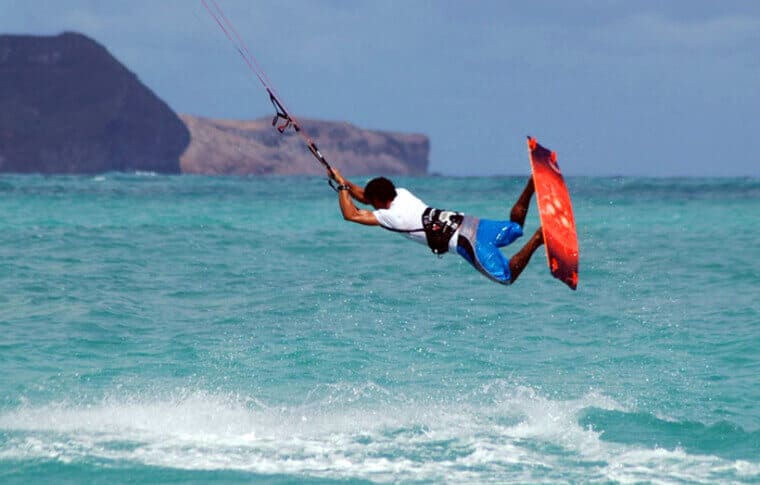
Kiteboarding is an exhilarating water sport that combines aspects of surfing, windsurfing, and paragliding. Taking kiteboarding lessons on the open water is crucial for anyone looking to master this thrilling activity while ensuring safety and skill development. The lessons typically cover essential techniques, safety procedures, and board skills necessary for a successful experience. Not only do these lessons provide practical insights, but they also help beginners gain confidence in handling the kite and board in various water conditions.
Why Take Kiteboarding Lessons?
Enrolling in kiteboarding lessons offers several benefits for novices and advanced riders alike. Firstly, professional instructors provide structured training tailored to your skill level. This ensures that you grasp the fundamentals of kite control, body positioning, and riding techniques effectively. Secondly, taking lessons minimizes the risk of injury as instructors instill safety protocols and emergency procedures crucial for the sport. Additionally, learning from experienced kiteboarders helps you progress rapidly, making your learning experience enjoyable and fulfilling. Lastly, lessons often include equipment rental, meaning you do not have to invest upfront in gear until you are certain you want to continue with the sport.

What to Expect During Kiteboarding Lessons
Taking kiteboarding lessons involves several stages, which are carefully designed to build a solid foundation. Initially, you will learn about the different types of kites and their respective features. This understanding is crucial when choosing the correct kite for varying wind conditions and personal preferences. Following this theory session, instructors move you to the practical aspect, where you practice setting up the kite and understanding its safety systems. On the water, the focus shifts to body drag techniques, which involve using the kite to pull your body across the water without the board. As you become more comfortable, you will gradually learn how to get up on the board, balancing the kite’s power and managing your speed. By the end of your lessons, you should feel confident enough to ride independently.
Top Tips for a Successful Kiteboarding Experience

Here are some useful tips to enhance your kiteboarding lessons and experience:
-
- Choose the Right Location: Select a lesson location known for its safe and consistent wind conditions.
- Wear Appropriate Gear: Invest in comfortable swimwear, a wetsuit, and a personal flotation device (PFD) for safety.
- Stay Hydrated: Kiteboarding can be physically demanding, so drink plenty of water before and during your lessons.
- Stay Patient: Progress may take time; be patient with yourself as you learn.
- Ask Questions: Never hesitate to ask your instructor for clarification to enhance your understanding.
The Importance of Safety in Kiteboarding

Safety should always come first in adventure sports, and kiteboarding is no exception. Your instructor will emphasize the importance of understanding wind conditions, weather forecasts, and water currents before commencing your lesson. A solid grasp of these factors can significantly reduce risks while kiteboarding. Furthermore, learning how to perform a self-rescue in case of an emergency is essential. Proper use of safety gear, including a helmet and impact vest, also plays a critical role in protecting you from potential hazards. Finally, practicing kiteboarding alongside fellow riders can help you navigate potential dangers more effectively, enhancing your overall experience.
Conclusion
Taking kiteboarding lessons on the open water is an indispensable step for any aspiring kiteboarder. From gaining theoretical knowledge about kites to mastering practical skills on the water, lessons provide a comprehensive foundation to ensure safety and development. Embracing the guidance of experienced instructors, understanding the environmental factors, and prioritizing your safety will lead to a more enjoyable and rewarding kiteboarding experience. As you advance in your skills, the thrill of kiteboarding will only deepen, offering endless opportunities for adventure and excitement on the water.
FAQs
Kiteboarding lessons generally last anywhere from 2 to 3 hours, depending on the organization and individual progress.
2. Do I need to have prior experience before taking kiteboarding lessons?
No prior experience is necessary! Kiteboarding lessons are designed for all levels, from complete beginners to those with some experience.
3. What should I bring to my kiteboarding lessons?
It’s essential to bring sunscreen, water, a towel, and any personal gear you may want to use, like swimwear. If you have a wetsuit, consider bringing it as well.
4. Are kiteboarding lessons expensive?
The price of kiteboarding lessons can vary based on location, duration, and the instructor’s experience. Generally, group lessons are more economical than private lessons.
5. Is kiteboarding safe for children?
Kiteboarding can be safely enjoyed by children under proper supervision and with age-appropriate instruction. Always consult with instructors about suitability for younger riders.




